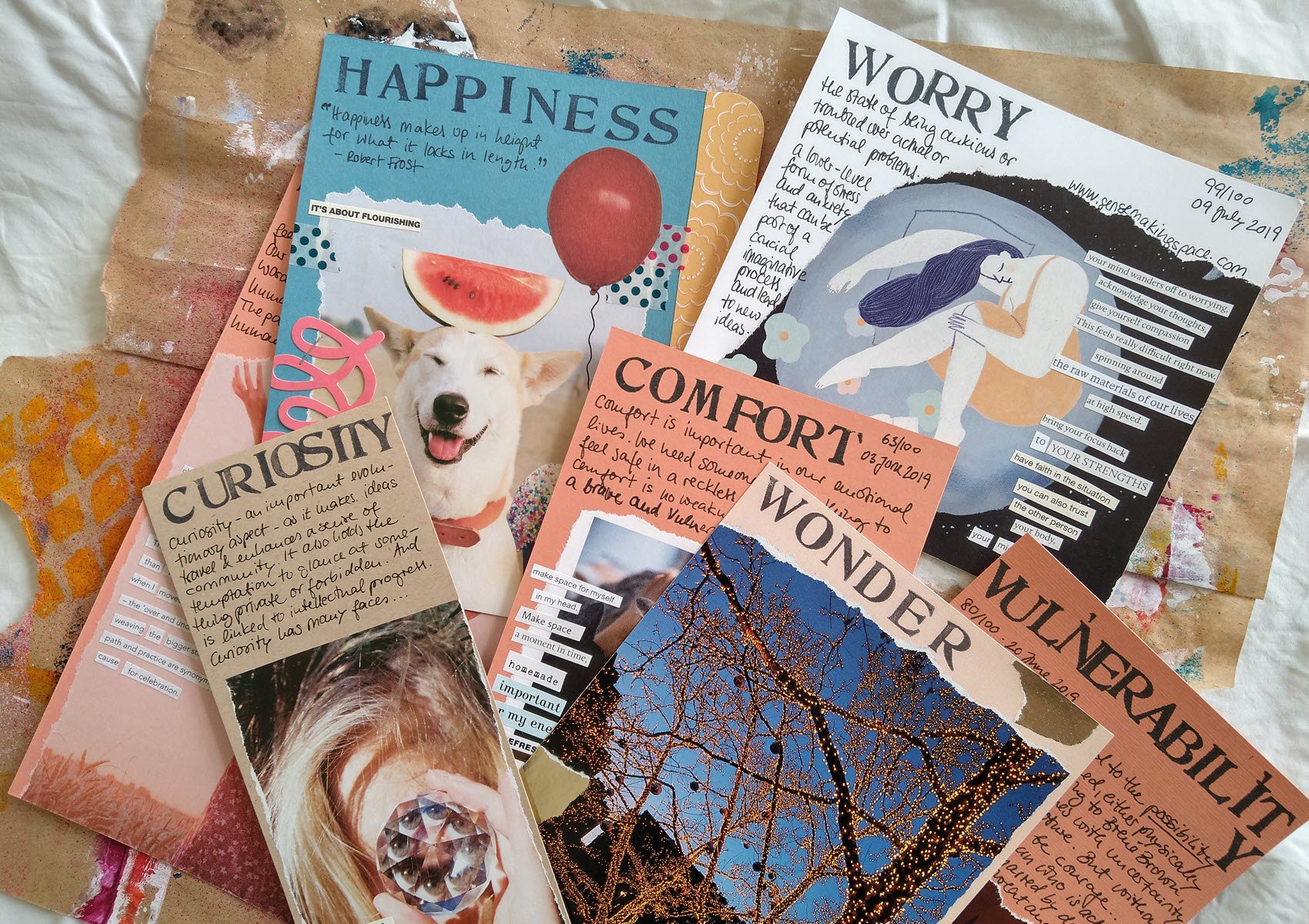Being a reflective person – reflective practice as an identity-based habit
In his book Atomic Habits, James Clear writes about identity-based habits and the importance (and power) of deciding what type of person you want to be.
If you decide you are a person who exercises, going out for a run on a rainy, dark winter morning becomes easier. If you decide you are a person who reads, you’ll find it easier to ringfence some time each day to spend with a book.
Building a clear identity around a certain habit will make the habit stick. Attaching an identity to a practice you want to develop will make the practice sustainable.
So, one important step on your journey toward a reflective practice is to embrace the idea of being a reflective person. But there’s something else that easily gets in the way of building sustainable practices: it’s the idea that we need to be in the mood for it.
When it comes to being creative, we decide that we’ll sit down when we’ve got an idea of what to create. When it comes to writing, we’ll wait until we know what to write about – yet all writers who share their practice tell us that they sit down to write no matter what, often following quite a rigid schedule or ritual.
The trap of right time, right mood
When it comes to cultivating a reflective practice, we might think that reflection is best attended to when we have a solid amount of free time, amid a busy day, week or month.
Additionally, we hang on to the idea that reflection is best done when we’re in the mood for pondering or contemplation.
Assuming that we cannot always or fully control our time and our mood, the secret lies in building a reflective practice that works within tiny amounts of time and can be matched with your full spectrum of moods, emotions and energy levels.
Whatever you bring to your reflection: use it!
I don’t think there’s a need to park certain thoughts, feelings or moods. There’s no need to empty your brain and get calm and quiet.
There is a need though to notice what you’re bringing in. With that awareness you can shape your reflective practice and use what’s there, warts and all.
Use it! What might this look like?
Your awareness of what you’re bringing into your reflective practice might influence what you’re attending to. It might help you set a clear focus for your practice on the day.
It might shape how you reflect: what framework seems most useful? What modality and in arts-based reflection, which materials do you feel drawn to?
And if you use arts-based or creative processes, the motto Use It! might also influence how you use materials or processes.
Some specific examples
If you bring joy: you will want to keep riding that wave of joy – joy is fleeting enough as it is! You might find it most valuable to reflect on something that went well and explore why. You can create a space to celebrate and capture ways of re-creating these conditions elsewhere in your work or life.
If you bring fatigue: why not allow yourself to work with the qualities of fatigue in your reflection as opposed to drum up extra energy or judge yourself for feeling drained. Rather than writing three pages or 20 minutes, write three sentences or a short list, or set a timer for five minutes. Choose a small format, something that feels doable: create a tiny collage or an inchie. If you bring fatigue, lean on other resources to get you started. Use a writing prompt, pick one of Brian Eno’s Oblique Strategies, choose a simple sentence starter and simply keep repeating it.
If you bring curiosity: tap into the power of being in a curious state to attend to a dilemma, something that puzzles you in your work, or reflect on a challenge which is unlike anything you’ve dealt with before. In arts-based reflection, you might use the energy of curiosity to work with an unfamiliar modality, process or material. If your reflective practice is built around writing, why not choose the format of a poem when you normally write free form. If you feel brave, why not check in with your body around that dilemma and move around your room, rather than remaining in your head?
If you bring frustration: maybe you feel drawn to reflecting on an area you know needs improvement. You might translate the energy of frustration into working in ways that can accommodate energy; use large sheets of paper or a big whiteboard, not a teeny tiny notebook which requires neat handwriting. You might want to rip paper to create a reflective collage instead of forcing yourself to cut out intricate shapes.
The key to success for any reflective practice is that we keep barriers of entry low.
Don’t set yourself rules around time, mood or energy levels required for worthwhile reflection. Instead: Use it!
Welcome your mood and let it shape your reflections.
Respond to your low or high energy by extending it into your practice.
It’s more sustainable and makes for a more compassionate practice.
If you feel curious, intrigued, in need or even ready to cultivate your reflective practice, join me at Sensemaking Studio - a 4-month reflective practice with a small group of like-minded Sense Makers.
We’ll work online and use arts-based processes without a need to see yourself as a creative or artistic person.
We’ll have the opportunity to work in a deeply personal way and enjoy the support and care of being in community.
Sensemaking Studio is the place to shape a reflective practice around your needs, interests, time constraints, and life rhythm.
We’re getting curious about the full spectrum of reflecting: what could a personal retreat day look like and how can you build micro-reflections into your day.
Runs from June to September 2024
Find out more… here:


